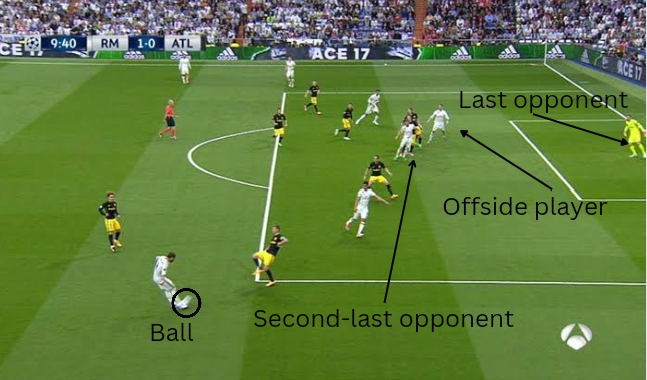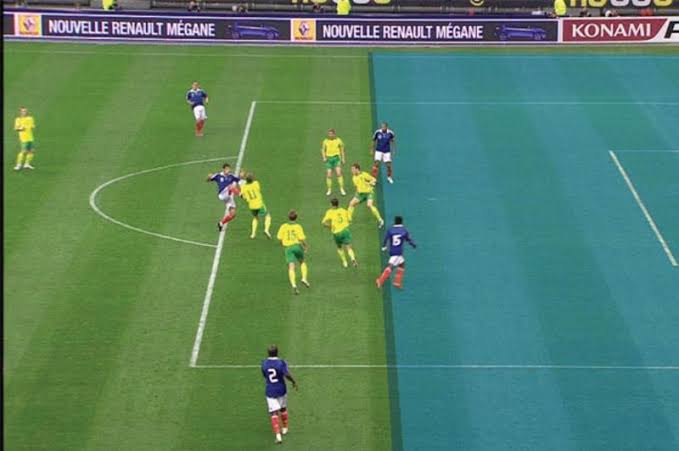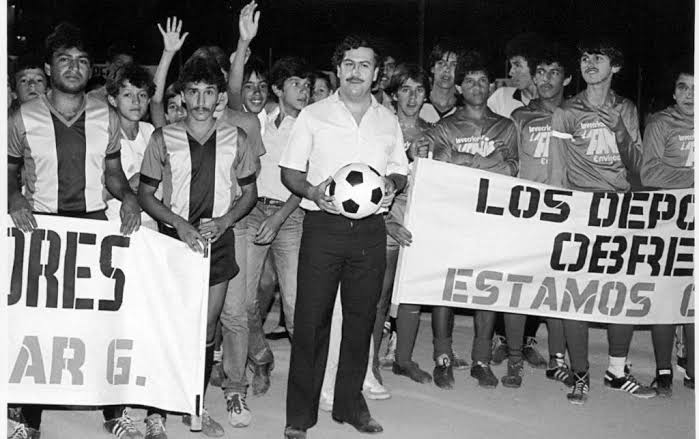Have you ever wondered what the offside rule means as a soccer enthusiast or lover who wants to grasp what the rule means? This article explains what offside in soccer means, along with simple explanation of the latest offside rules.
In the beautiful game of soccer, the offside rule is the most controversial or debated rule because It’s always difficult for fans of the game to understand what the laws really mean.
Soccer and its laws of the game change every year, not just since the founding of the International Football Association Board (IFAB); however, since the 1860s, the offside rule has developed and changed significantly. However, the purpose of the rule remains the same.
What Is Offside In Soccer?
According to International Football Association Board (IFAB), the offside rule states that players are offside if they become involved in active play when they are in their opponents’ half of the pitch, and any part of their head, body, or feet is nearer to their opponent’s goal line than both the ball and the second-last opponent.
What is second-last opponent in soccer?

The second-last opponent in offside soccer rules is the player immediately behind the player who is suspected to be in an offside position.
In most cases, the last opponent is typically, but not necessarily, the goalkeeper, who is closer to their goal line. Then the second last opponent is the next player immediately in front of him.
For a player to be in an offside position, such a player must be in the opponent’s half of the field to be offside.
For a clearer grasp of the offside rule, let me explain why a player will be penalized when found in an offside position on the pitch.
- When a player becomes involved in active play.
- While any part of the player’s head, body, or feet is nearer to the opponent’s goal line than both the ball and the second-last opponent.
- When a part of a player’s head, body, or feet is in the opponent’s half when the ball is played or touched by another player on their team.
While all of the rules above are a fact about the offside rules; however, it’s also important to state that because a player is in an offside position on the pitch doesn’t necessarily mean such player has committed an offside offense.
Before a player can be penalized by the official in charge of a game, he must have found the player involved in active play while in an offside position before he can be adjudged to have committed an offense.
In the past, referees usually penalized a player for being in an offside position immediately after the ball was played toward them by a teammate. However, in recent years the rule has changed, with players now only penalized when they become ‘involved in active play on the pitch.
Having highlighted what the offside rule means in soccer. Let me help you comprehend what being involved in active play means.
What is active play in soccer?
According to the IFAB, active or deliberate play in soccer means “gaining an advantage by playing the ball or interfering with an opponent after the ball has rebounded or been deflected.”
Although the meaning or definition of active play in soccer is clearly stated above, we should also understand how a player could interfere with play while in an offside position.
- Interfering with play by playing or touching a ball passed by a teammate when in an offside position.
- Interfering with an opponent while in an offside position.
- Gaining an advantage over the opposing team while the referee has called for an offside.
Situations On The Pitch Where There Is No Offside Offense
There are (3) situations where there is no offside offense on the pitch, even if the player is in an offside position and becomes involved in active play.
- There is no offside in soccer when a player receives the ball directly from a goal-kick.
- There are no offside when a player receives the ball directly from a throw-in.
- There are offside when a player receives the ball directly from a corner-kick.
As stated above, when a player receives the ball from all of these positions, it gives the player an ideal opportunity to take advantage of the opposing team’s lapses in defense, especially when the defenders forget there is no offside offense in those situations.
What sanctions are meted out to the player or the team when a player is in an offside position?
So when an offside offense happens in a match, the official will award an indirect free-kick to the opposing team, and the kick will be taken from the spot where the player in the offside position became involved in active play.
Having talked about what the offside rule means in soccer, overall, an offside offense isn’t a serious deal for the individual who is caught in an offside position.
However, being caught in an offside position can put the team at a disadvantage and potentially restrict a goal-scoring opportunity if the player in an offside position actually gets to score a goal when caught in an offside position.

An Overview Of How The Offside Rule Is Applied On The Pitch
More often than not, soccer fans usually get confused or find it hard to understand where and how the rule could be applied on the pitch. So, to help prevent any possible confusion, let’s take a look at different situations where the rule could be applied.
- In a situation where a player is moving or standing in an offside position, in a way, it’s an offside offense, and it can impact the ability of the opponent to play or challenge for the ball.
- In a situation where a player is in an offside position and moving towards the ball, intending to play the ball, and in such a situation, the player is fouled while attempting to play the ball, the official will penalize the opposing team for a foul.
- In a situation where an offense is committed against a player on the pitch in an offside position, the official will penalize the player for being offside because the event occurred before the foul challenge happened.
- In a situation where an attacking or defensive player steps or stay off the pitch, enters from the goal-line and gets involved in active play, such player shall be considered to be positioned offside.
Frequently Asked Questions About Offside Rules In Soccer
Here are some of the frequently asked questions about offside in soccer.
Is a player offside if the ball comes off a defender?
According to IFAB, a player is in an offside position or penalized for being offside if such a player receives the ball after it has rebounded or deflected off an opponent.
However, suppose a player in an offside position receives the ball after the defender or opponent has played the ball. In that case, the player is not considered to have gained an advantage and will not be penalized for being in an offside position.
Can a back-pass be adjudged an offside?
The first thing to consider in such a situation is to consider if the player being passed to or receiving the ball is nearer to the opponent’s goal line than both the ball and the second-last opponent.
So when the ball is passed backward, the player in that position is adjudged to be in an offside position.
However, if the player is not nearer to the opponent’s goal line than both the ball and the second-last opponent when the ball is passed backward, then it won’t be adjudged as being in an offside position.
Why do the linesmen wait to flag offside?
The linesmen in soccer usually delay raising of the flag when they are not sure if an offside offense has occurred; thus, to avoid robbing the soccer team of a goal in the case of human error. Nonetheless, the video assistant referee (VAR) will step in to correct mistakes, if any, after the offside flag is raised.
Conclusion
The offside rule being one of the laws of the game, is no doubt one of the complex rules the fan of the game will like to have a grasp of, even though it takes time to understand.
Therefore, with these pieces as a soccer fan, you should have a clearer knowledge of what the offside rule means in soccer.







